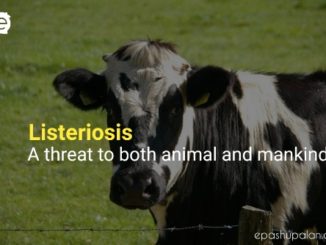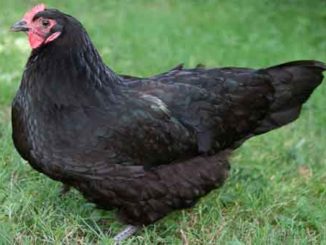Abstract
Chronic respiratory disease (CRD) is an economically important disease of poultry. A case of CRD was recorded from a village. Post mortem examination was conducted and tentatively diagnosed as chronic respiratory disease. The birds were treated with Megadox-N and Immuplus for consecutive 7 days and advised to maintain proper hygienic measures and adequate ventilation.
Keywords: CRD, poultry, post mortem
Introduction
The poultry industry is the main contributor of egg and meat. CRD is one of the most economically important diseases of chicken caused by Mycoplasma gallisepticum. The organism mostly colonizes in the respiratory tract and multiplies in the trachea, lung and air sacs. The incidence of CRD based on gross lesions varied from 9.87-12.84% (Uddin et al., 2010). The report showed that a higher incidence of CRD was observed in summer followed by winter and rainy season (Yunus et al., 2009) whereas Sultana et al. (2012) and Bahatti et al. (2013) observed higher cases in winter. The major economic losses of CRD were mainly due to high morbidity, mortality, carcass condemnation, decreased egg production, reduced hatchability rates, altered feed efficiency and weight gain (Gondal et al., 2015; Karthik et al., 2018). The transmission of CRD disease can be either horizontal or vertical (Hassan et al., 2014). Diagnosis is made based on history, clinical signs and symptoms, post mortem findings (Karthik et al., 2018). Limited literature was available for the medical management of CRD in poultry, thus the present case is recorded.
Case history and clinical observations
A Vanaraja chicken of 14th weeks old was presented on 22.11.2017 with a complaint history of having respiratory problems and nasal discharge since 3 days at Iramsiphai, Manipur. On further enquiry, the farmer added that he had a flock of 30 birds of Vanaraja, Srinidhi and local chickens of the same age group. The chief complaint was that among 30 numbers of birds, 5 birds were found dead after showing the clinical signs of depression, reduced feed and water intake, nasal discharge and facial swelling. A visit to the farm revealed poor hygienic measures and inadequate ventilation. The clinical signs observed were nasal discharge, conjunctivitis, dull and depressed, coughing, partial to complete closing of the eyes with severe facial swelling (Fig.1). The post mortem lesions include hemorrhagic spots in the tracheal rings; presence of mucous in the tracheal lumen in some affected birds, and as a complication, fibrinous pericarditis and fibrinous perihepatitis were also observed (Fig.2).


Treatment
The birds were treated with Megadox- N powder (Neospark) @ 1g /4L of drinking water and Immuplus (Indian herbs) @0.5g/25 birds for consecutive 7 days. The owner was further advised to isolate the sick and suspected birds from the flock, maintain proper ventilation, avoid dusty conditions inside the shed, reduce overcrowding of birds and maintain strict biosecurity measures in and around the farm premises. On telephonic conversation with the owner, he reported that the birds were active, alert and returned to normalcy.
Results and discussion
Based on case history, clinical symptoms, gross lesions of PM findings, the case was tentatively diagnosed as CRD. In the present case, all birds in the flock were affected along with the mortality of five birds. CRD is a disease of poultry with high morbidity (50 %) and low mortality (5%) (Karthik et al., 2018). The clinical symptoms shown in the case are similar to those reported by Gondal et al. (2015). Overcrowding of birds, poor hygiene and less ventilation in the shed may predispose the birds to CRD. Similar findings also suggested that cold weather, poor air quality or crowding, concurrent infections, and some live virus vaccinations are responsible for the transmission of CRD (Ley and Yoder, 2008). The gross lesion findings were tracheitis, perihepatitis and pericarditis which were in agreement with the findings of Rajkumar et al. (2017). Maintaining strict biosecurity measures, providing proper ventilation with an adequate spacing of the birds, etc., along with the administration of antimicrobial drugs improved the condition of birds. Previously researchers were also reported that antibiotic may either respond or not according to the condition of the status of birds (Kuniyasu et al., 1967; Uchida et al., 1986). As CRD is one of the most commonly occurring diseases in almost any flock especially maintained under poor conditions, good hygienic practices can prevent the occurrence of diseases and economic loss on the farm.
References
- Bahatti, I., Rizvi, S. A., Sultana, R., & Mustafa, Y. S. (2013). Prevalence and HI titer of chronic respiratory disease (CRD) in broiler and layers commercial farms in district Lahore. Science International (Lahore), 25, 159-161.
- Gondal, M.A., Rabbani, M., Muhammad, K., Yaqub, T., Babar, M.E., Sheikh, A.A., Ahmad, A., Shabbir, M.Z. and Khan, M.I.(2015). Characterization of Mycoplasma gallisepticum isolated from commercial poultry flocks. Journal of Animal and Plant Sciences, 25(1),108-113.
- Hassan, M.K., Kabir, M.H., Hassan, M.A.A., Sultana, S., Khokon, I. and Kabir, S.M.L. (2016). Prevalence of poultry diseases in Gazipur district of Bangladesh. Asian Journal of Medi cal and biological Research, 2 (1), 107-112.
- Karthik, K., Bharathi, R., Mahaprabhu, R., Manimaran, K. and Shoba, K. (2018). Chronic respiratory disease outbreak in an organized native chicken farm. Journal of Dairy, Veterinary and Animal Research, 7(3), 79‒82.
- Kuniyasu, C., Matui, K., Ando, K. and Yoshida, T. (1967). Serological responses of chickens naturally infected with Mycoplasma gallisepticum and effect of tylosin on these responses. National Institute of Animal Health Quarterly, 7, 1-7.
- Ley, D. H. and Yoder Jr, H. W. (2008). Mycoplasma gallisepticum infection. Diseases of poultry, 12, 807-834.
- Rajkumar, S., Reddy, M. R. and Somvanshi, R. (2017). Molecular detection and pathology of spontaneous cases of Chronic Respiratory Disease in chicken. Indian Journal of Veterinary Pathology, 41(4), 277-282.
- Sultana, R., Siddique, B., Ali, R., Chaudhary, S. and Maqbool, A. (2012). A study on the prevalence of respiratory diseases in broiler and layer flocks in and around Lahore district. Punjab University Journal of Zoology, 27(1), 13-17.
- Uddin, M. B., Ahmed, S. S. U., Hassan, M. M., Khan, S. A. and Mamun, M. A. (2010). Prevalence of poultry diseases at Narsingdi, Bangladesh. International Journal of Biological Research, 1(6), 09-13.
- Uchida, K., Takayama, K. and Harada, Y. (1986). Drug sensitivity in vitro of Mycoplasma gallisepticum and M. synoviae strains isolated from commercial broilers and layers [in Japanese with English summary]. Journal of the Japan Veterinary Medical Association, 39 (10), 644-647.
- Yunus, A. W., Nasir, M. K., Aziz, T, and Böhm, J. (2009). Prevalence of poultry diseases in district Chakwal and their interaction with mycotoxicosis: 2. Effects of season and feed. Journal of Animal and Plant Sciences, 19, 1-5.
|
The content of the articles are accurate and true to the best of the author’s knowledge. It is not meant to substitute for diagnosis, prognosis, treatment, prescription, or formal and individualized advice from a veterinary medical professional. Animals exhibiting signs and symptoms of distress should be seen by a veterinarian immediately. |






As there are little informations available on CRD in text books, this article will serve as an information bank. Really helpful.